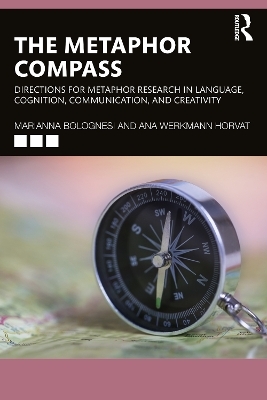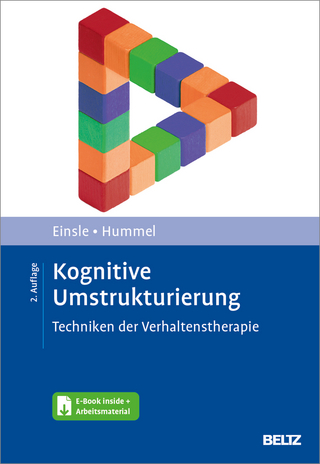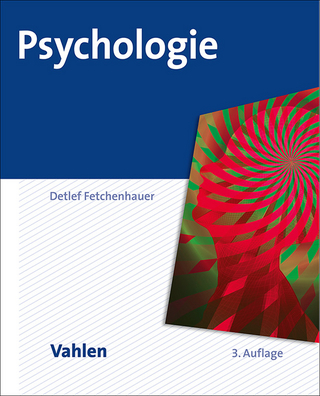
The Metaphor Compass
Routledge (Verlag)
978-0-367-48486-6 (ISBN)
The Metaphor Compass: Directions for Metaphor Research in Language, Cognition, Communication, and Creativity provides a roadmap to navigate the recent findings and cutting-edge research conducted around the world on metaphor, focusing on the following four themes: Metaphor and Linguistic Diversity, Metaphor and Cognition, Metaphor and Communication, and Metaphor and Creativity.
The research presented in this book employs a variety of empirical methods, ranging from neuroimaging to corpus analyses and from behavioral experimentation to computational modeling. Divided into four parts, it offers an array of pedagogical material including activities at the ends of the chapters to help the reader to consolidate the notions discussed in the chapter.
This is a useful resource for students, researchers, and scholars of linguistics, communication, anthropology, psychology, and cognitive science looking to learn about figurative language and creativity.
Marianna Bolognesi is Associate Professor at the University of Bologna, Italy, and past Research Associate for the Creative Multilingualism project in the Department of Medieval and Modern Languages at the University of Oxford, UK. Ana Werkmann Horvat is an Assistant Professor at the University of Osijek, Croatia, and past Research Associate for the Creative Multilingualism project in the Department of Medieval and Modern Languages at the University of Oxford, UK.
Acknowledgements
Introduction
PART I - Metaphor and Linguistic Diversity
Chapter 1: Metaphoric expressions around the world: Variability and motivations
1.1 Key aspects and open questions: types of metaphoric expressions
1.2. Research directions: The motivations for metaphor variability
1.3 Metaphor variability applied: The interesting case of emotion-color associations
1.4 Summary
1.5 Activities
Chapter 2: Conceptual metaphors around the world: Variability and motivations
2.1. Key aspects and open questions: The universality of metaphor
2.2 Research directions: How language drives thought
2.3. Metaphor variability applied: Building cross-linguistic repositories
2.4 Summary
2.5 Activities
PART II - Metaphor and Cognition
Chapter 3: Meaning variability: Literal and metaphorical meanings
3.1 Key aspects and open questions: On the status of literal vs. metaphorical meaning
3.2 Research directions: Processing literal vs. metaphorical meaning
3.3 Metaphor processing applied: Understanding literal vs. metaphorical meaning
3.4 Summary
3.5 Activities
Chapter 4: Speakers’ variability: First- vs. second-language speakers processing metaphors
4.1 Key aspects and open questions: Metaphorical competence in L1 and L2/LS
4.2 Research directions: From the classroom to the lab
4.3 Metaphor processing applied: L2 vs. L1 speakers use of conventional metaphors
4.4 Summary
4.5 Activities
PART III – Metaphor and Communication
Chapter 5: Metaphor variability in monomodal and multimodal communication
5.1 Key aspects and open questions: Genres and modes of metaphor expression
5.2 Research directions: The interpretation of metaphors expressed beyond language
5.3 Metaphor variability across modes applied: Tools for metaphor identification and analysis in still and moving images
5.4 Summary
5.5 Activities
Chapter 6: Metaphor in verbal vs. visual communication
6.1 Key aspects and open questions: Metaphoric pictorial expressions and conceptual metaphors
6.2 Research directions: On the role of iconicity in constructing metaphors in different semiotic systems
6.3 Metaphor variability across modes applied: on the deliberateness of metaphors expressed beyond language
6.4 Summary
6.5 Activities
PART IV - Metaphor and Creativity
Chapter 7: Creativity and metaphorical thinking and talking
7.1 Key aspects and open questions: Creative thinking
7.2 Research directions: Linguistic creativity and metaphor
7.3 Variability in creative metaphor applied: mixing idiomatic expressions and novel idioms
7.4 Summary
7.5 Activities
Chapter 8: Different ways to be creative with metaphors in language
8.1 Key aspects and open questions: Degrees of creativity
8.2 Research directions: The effect of creative metaphor
8.3 Variability in creative metaphor applied: how different groups of speakers comprehend different types of creative metaphoric expressions
8.4 Summary
8.5 Activities
Conclusion
| Erscheinungsdatum | 16.12.2022 |
|---|---|
| Zusatzinfo | 4 Tables, black and white; 4 Line drawings, black and white; 9 Halftones, black and white; 13 Illustrations, black and white |
| Verlagsort | London |
| Sprache | englisch |
| Maße | 152 x 229 mm |
| Gewicht | 420 g |
| Themenwelt | Geisteswissenschaften ► Psychologie ► Allgemeine Psychologie |
| Geisteswissenschaften ► Sprach- / Literaturwissenschaft ► Anglistik / Amerikanistik | |
| Geisteswissenschaften ► Sprach- / Literaturwissenschaft ► Literaturwissenschaft | |
| Geisteswissenschaften ► Sprach- / Literaturwissenschaft ► Sprachwissenschaft | |
| Sozialwissenschaften ► Kommunikation / Medien ► Kommunikationswissenschaft | |
| ISBN-10 | 0-367-48486-2 / 0367484862 |
| ISBN-13 | 978-0-367-48486-6 / 9780367484866 |
| Zustand | Neuware |
| Informationen gemäß Produktsicherheitsverordnung (GPSR) | |
| Haben Sie eine Frage zum Produkt? |
aus dem Bereich


